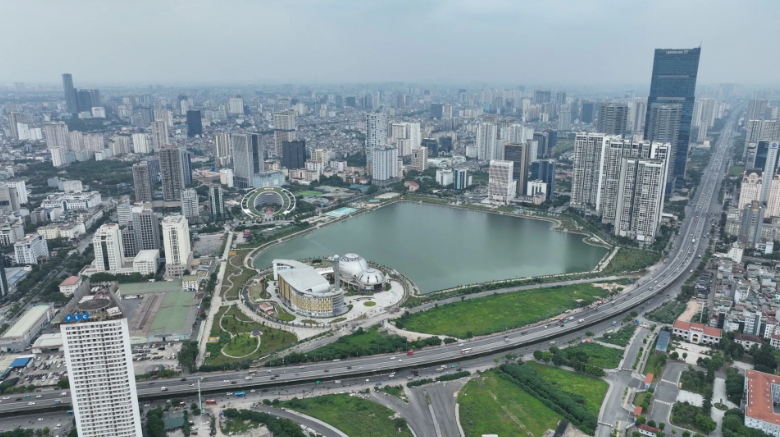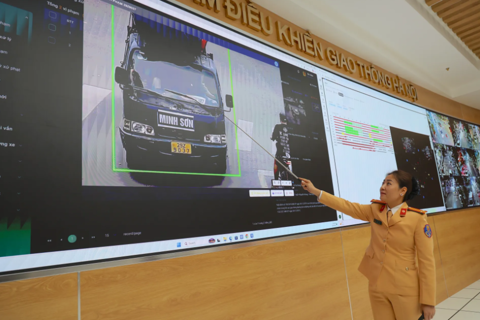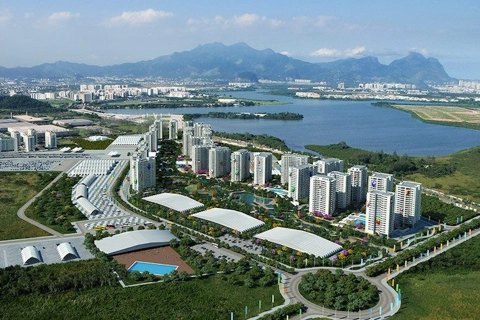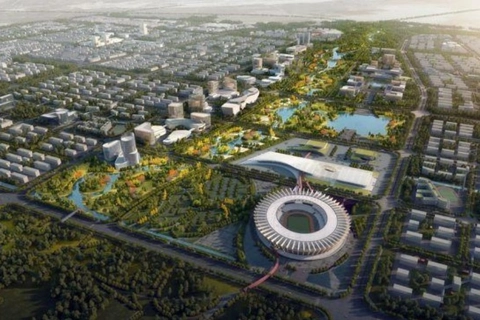Hanoi accelerates digital urban planning
Hanoi’s approach could position the city as a national leader in smart urban governance, and offer a blueprint for digital transformation in cities across Vietnam and beyond.
THE HANOI TIMES — Hanoi is accelerating its digital transformation in urban planning to enhance governance, increase transparency, and meet the growing demands of becoming a sustainable, smart capital city.

Hanoi from above. Photo: Cong Hung/The Hanoi Times
Harmonizing with national priorities, Hanoi is committed to fully digitizing its urban planning data by 2025. According to Plan No. 150/KH-UBND, Hanoi aims to digitize 100% of its planning records using geographic information system (GIS) technology by 2026. This data will be integrated into the National Planning Information and Database System to provide public agencies and private users with timely access.
The digitization effort includes not only general planning records, but also technical and specialized documents under the city’s jurisdiction.
By 2030, all such records are expected to be digitized and accessible through GIS platforms. At the same time, the city plans to invest in digital tools and applications to enable real-time data access for government departments, businesses, and residents.
City departments and sub-municipal authorities have also been tasked with building and maintaining planning databases that align with national standards for formatting, security, and data sharing. This coordinated approach aims to eliminate silos and establish a unified, accessible planning system at all levels of governance.
Building the digital backbone
To support this transformation, Hanoi is investing heavily in digital infrastructure. According to Plan No. 58/KH-UBND on February 26, 2025, the city will achieve comprehensive fiber-optic and 5G coverage by 2026. The city will also deploy Internet of Things (IoT) sensors and cloud computing across key administrative functions.
Modern data centers are being built to store, process, and analyze planning data for more than 8.5 million residents. This infrastructure will enable real-time monitoring and management of urban planning updates, zoning changes, and building permits, reducing the risk of violations and enhancing the city’s ability to respond to development pressures.
The legal foundation for this shift is also being strengthened. The revised Law on Urban and Rural Planning, which takes effect on July 1, 2025, aims to eliminate overlapping systems and promote the use of digital technology in planning preparation, appraisal, and oversight.
However, according to architect Tran Huy Anh, a member of the Hanoi Architects Association, the city began digitizing land management systems as early as 2000, but the process lacked clear strategic direction, technical standards, and trained personnel.
“Despite large investments, the accuracy of digital land and planning data remains low. Much of it cannot be effectively used for actual planning,” he said.
As the city revises its Master Plan and drafts a new Capital Plan, outdated and inconsistent cadastral base maps remain a serious obstacle. Many areas still lack formally surveyed cadastral maps, which complicates land use management. Updates to maps and property records have been irregular, further hindering effective oversight.
Meanwhile, global digital mapping technologies have advanced rapidly, and many are already in use across Vietnam in sectors such as e-commerce and logistics. Hanoi’s planning maps are increasingly synchronized with cadastral maps down to the level of individual land plots and can be accessed via smartphones and computers.
A new approach
Given the innovation and agility of Vietnam’s tech companies, architect Tran Huy Anh calls for a new approach to public data acquisition. Rather than relying solely on lengthy government projects, he suggests that the city purchase high-quality digital planning data directly from private developers.
“Many sectors have done this; there’s no reason urban planning should be an exception,” he said. "Private firms can deliver ready-to-use, user-friendly products far more efficiently. These solutions are accessible to the general public and enable government officials to engage with citizens online in real time.”
On June 5, the Hanoi People’s Committee issued Decision No. 155/QD-UBND to launch a new initiative to build a shared digital database using centrally digitized documents from government agencies across the city.
Architect Tran Huy Anh said this move will support the integration of Hanoi’s data into the national planning system.
As part of this effort, the Public Administration Service Center has been tasked with developing a citywide administrative data warehouse. The project is expected to be completed by the end of 2025 and to begin official operations in February 2026.
“If successful, Hanoi’s approach could position the city as a national leader in smart urban governance and provide a template for digital transformation in cities throughout Vietnam and beyond,” he said.











